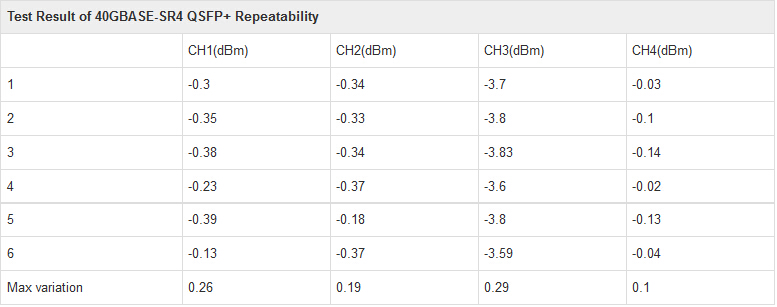Nowadays, 40 Gigabit Ethernet is the main trend in higher data transmission. The 40G optical devices are gaining popularity, including 40G QSFP+ transceivers and 40G direct attach cables. 40G direct attach cable (DAC) provides a cost-effective solution for high-density network connectivity. It is a kind of high-speed cable which has transceivers on either end used to connect switches to routers or servers. According to the media type, DAC can be classified into direct attach copper cable and active optical cable.
40G active optical cable (AOC) is a type of active optical cable for 40GbE applications that is terminated with 40GBASE-QSFP+ on one end, while on the other end, besides QSFP+ connector, it can be terminated with SFP+ connectors, LC connectors, etc. 40G active optical cables have great advantages over 40G direct attach copper cables (like QSFP+ cable) when transmission distance reaches up to 7 meters. Moreover, 40G AOC has lower weight and tighter bend radius, which enables simpler cable management.

Actually, 40GBASE-SR4 QSFP+ transceivers also have the above advantages. So why we highly recommend 40G AOC rather than 40GBASE-SR4 QSFP+ optics? The following section will tell the answer.
Firstly, 40G AOC has lower cost than 40GBASE-SR4 QSFP+ modules and does not need to use with extra fiber patch cables. Especially, 40G breakout active optical cables, such as 40GBASE QSFP+ to 8 x LC or 40GBASE QSFP+ to 4 x SFP+ are cost-effective solutions to achieve 40G migration. What’s more, if using AOC, there will be no cleanliness issues in optical connector and there is no need to do termination plug and test when troubleshooting, which can help end users save time and money.
Insertion loss and return loss are the second factor. Under the same case of transmission distance, the repeatability and interchangeability performances of 40GBASE-SR4 module interface are not good as 40G AOC. Furthermore, when different fiber optic cables plug into the module, it will have the different insertion loss and return loss. Even for the same module, this issue is existed. Of course, the related metrics, such as the testing eye pattern, will have no significant changes so long as the variation in and conformed to the scope. In contrast, an AOC with good performance is more stable and has better swing performance than SR4 modules in this situation. The following table shows the result of the repeatability test of SR4 module. From the data, it is clear to see that the repeatability performance of SR4 module is not stable.

Thirdly, four-quadrant test, a testing under four combinations of input voltage and signal amplitude, is used to ensure the product to keep better performance even under the lowest and highest voltage and temperature situation. Four-quadrant test in wide temperature range is used to test MTP/MPO interface and optical cable of AOC to ensure them not to be melted in high temperature. Generally, the current products of AOC can satisfy this demand. Moreover, the performance of AOC is more stable than SR4 module which should be used with indeterminacy-performance MTP/MPO connectors. Unlike 40GBASE-SR4 module, the quality index of AOC is judged by electric eye pattern but not by light eye pattern.
Fourthly, digital diagnostic monitoring (DDM) can help end users to monitor real-time parameters of the modules. Such parameters include optical output power, optical input power, temperature, laser bias current, and transceiver supply voltage, etc. 40GBASE-SR4 QSFP+ transceiver with DDM function can ensure its optimal coupling by the ADC (analog to digital converters) value of real-time monitoring receiver when receive coupling. Thus, 40GBASE-SR4 modules have better receiving sensitivity than 40G AOC. However, at present, the 40GBASE-SR4 and AOC cannot reach the function of real-time power monitoring.
Transmission distance is the last factor. When transmitting over OM3 fiber, there is no significant difference between 40GBASE-SR4 and 40G AOC. But 40GBASE-SR4 has better performance control than 40G AOC. Moreover, proposals for transmission distance that is longer than 300 meters will be SR4 module in order to ensure a good performance.
Through the above analysis, we can see that 40G AOC has better consistency and repeatability cabling performance. Moreover, it can avoid the influence of environment and vibration, even for troubleshooting, AOC is more easier to manage. So active optical cable is highly recommended to use in data center interconnection. Apart from 40G AOC, FS.COM also supplies 10G DAC (eg. SFP-H10GB-ACU10M) which can meet the ever increasing need to cost-effectively deliver more bandwidth, and can be customized to meet different requirements.
没有评论:
发表评论